Dillenger Bafang Mid Drive Electric Bike Kit Review Part 2: Ride & Range Test [VIDEO]
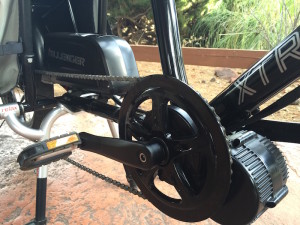
Overall, the Dillenger Bafang mid drive kit is one of the more refined systems that can be installed on almost any bike.
Mid drive systems can climb almost any hill because they can leverage the gears of the bike, similar to a car’s motor and transmission.
This review is for the 750 watt system but there are also 250 watt, 350 watt, and 500 watt systems available.
In this second part of the full review of the Dillenger Bafang mid drive kit, you will get an idea of the ride characteristics, range test, pros, cons, and overall thoughts on this kit.
Make sure you check out part 1 of this review with large detailed pictures of the installation and kit specifications to get familiar with this system.
What you can expect from the Dillenger Bafang Mid Drive Electric Bike Kit:
To get acquainted with the Bafang kit, checkout this video:
Dillenger began in Australia in 2007 and they are in the process of establishing themselves in multiple European markets and in the US.
In addition to this Bafang mid drive kit Dillenger also sells a range of hub motor kits and complete electric bikes.
Now let’s take a look at how the system performs on the road.
Riding the Dillenger Bafang Mid Drive Electric Bike Kit:
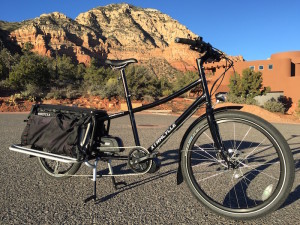
A mid drive with 750 watts and up to 80 Nm of torque is probably a bit excessive for most bikes but it definitely helps with carrying a lot of cargo on the Xtracycle Edgerunner, especially up steep hills! It is nice that Dillenger offers the options for 250, 350, or 500 watt systems to fit your riding needs.
This Bafang system is a cadence sensor system which means that when the cranks are turning the system will add assist. It is a simpler assist system when compared to a torque sensor that varies the assistance based on how hard or easily you are pedaling. Bafang is rumored to have a torque sensing mid drive at some point.

The brake levers that come with the kit have a sensor that will stop the assist when the brake lever is engaged. They only work with mechanical cable actuated brakes, not hydraulic brakes, but there is a new universal brake sensor (aftermarket) that will work with hydraulic brakes.
When you start pedaling the power gradually adds assist and the motor is relatively quiet. This adds up to a pretty smooth riding experience.
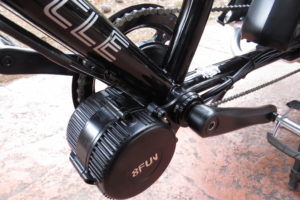
All mid drives motors will add additional wear to the drivetrain (chainring, chain, cogs, and derailleur), because they are providing more consistent power to the drivetrain than a normal human can. At 750 watts of power the additional wear will probably be significant in the long run. That is another consideration when selecting the power level for your bike.
Speaking of the power, in the higher pedal assist settings you will notice the “hard shifts” or abruptness when changing gears. The Bafang system doesn’t have a system to sense when you are going to shift (Bosch & Kalkhoff Impulse systems do), so the shifting will happen under full power. If you have a higher quality drivetrain you may not notice it as much but it will still be somewhat abrupt.
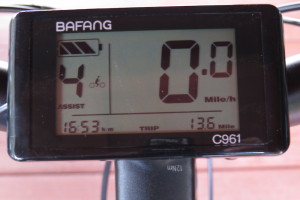
The Bafang mid drive comes set up with 3 levels of pedal assist and a “0” level for no assist. There is a way to customize the system to add up to 9 indexed levels of pedal assist. That is nice if you prefer having smaller incremental differences in the pedal assist levels. I found that 5 levels of assist worked well for my needs.
In addition to pedal assist there is the thumb throttle option that can add a boost to the pedal assist or it can be used as a pure throttle (no pedaling required). There is some delay between using the throttle and transitioning back to the pedal assist and it would be nice to have smoother transition.
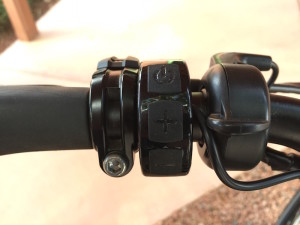
For the US and UK market Dillenger has spec’ed a 48V 8ah lithium battery with Headway cells. For the Australian market the battery is a 48V 11.6ah lithium with Samsung cells, but it is a more expensive kit.
The kit comes with a battery mount that attaches to the water bottle braze-ons on most bike frames. The Xtracycle Edgerunner that I used to test this kit has a battery mount near the rear wheel.
The battery can be charged in ~ 4 hours with the included charger. It can be charged on the bike or unlocked and removed from the bike for charging inside.
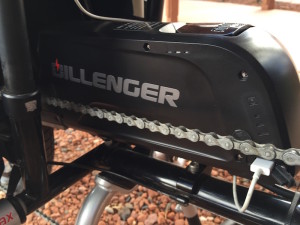
The LCD display is very large and easy to read with just enough information like: current speed, odometer, trip distance, battery level, pedal assist level, and current time. It has a backlit feature that makes it very easy to see this info while riding at night. The backlight brightness can be adjusted in the advanced settings.
To turn the system on, the battery must be turned on in addition to the on/off button at the control pad on the handlebars. The control pad also has + – buttons for adjusting the assist levels and changing the advanced settings.
Now let’s see how the system did in the range test.
Dillenger Bafang Kit Range Test Results:
Here is the real world information on how the Dillenger Bafang mid drive kit performed on a riding circuit that includes hills, flats, traffic, wind (when available) etc.
While testing these bikes I like to put them through the toughest conditions to see where their bottom line is in regards to range and speed.
Range: As you can see from the GPS info that I recorded, the kit traveled 20.8 miles and did a total elevation gain/loss of around 1,700 ft. Considering that I weigh 190 lbs and I pedaled very lightly this is pretty good range for a 48 Volt 8 ah battery pack (384 Watt Hours) with a 750 watt motor.
Watt hours are the total energy in a battery pack and it is based on the volts x amp hours of a pack. This is a way to compare the size of the “gas tank” of electric bikes.
Please keep in mind that if you pedal more, weigh less than me, ride slower and/or you use the bike in terrain that is not as hilly you will get more range. These results are from tough testing.
Speed: The stock speed for the US is 20 mph with assist. There is a way to customize the max speed between 10 mph to 25 mph in the advanced settings.
Weight: The kit tips the scales at around 15 lbs.
The weight distribution of the Dillenger Bafang mid drive kit is very good because the motor and battery are mounted in the center of the bike and relatively low to the ground. This is good for overall bike handling.
Pros:
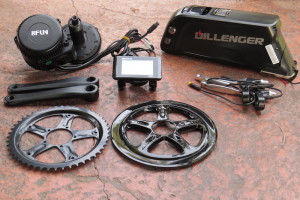
Powerful Mid Drive: A lot of the mid drives installed on complete bikes are limited to 250 or 350 watts. The Dillenger Bafang offers those in addition to 500 and 750 watt options. For those that want the higher power it is nice to have more options.
Cons:
Cadence Sensor: The cadence sensor pedal assist is not as intuitive as a torque sensor pedal assist system because it will provide a lot of power even if you are “soft pedaling”. Cadence sensor systems are generally found on the more economical systems and this may be a way to keep the cost of this system relatively economical. There is a rumor that Bafang will be offering a torque sensor mid drive.
Hard Shifts: Since this system doesn’t reduce power when you shift the gears, there can be some abrupt shifts when in the higher pedal assist levels. It would be nice to see the integration of a shifting sensor.
Conclusion:
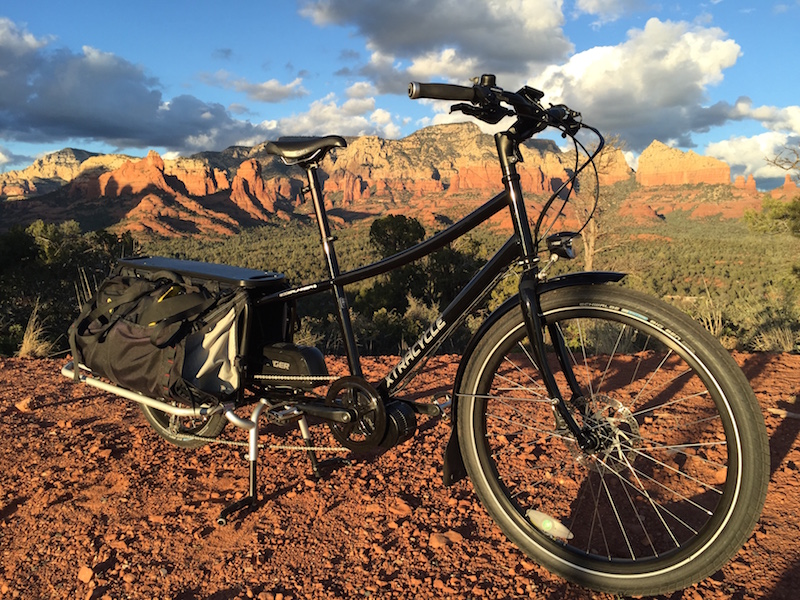
Please keep in mind that this is a relatively short term test. This testing can’t really give you the long term review of durability and reliability. My thoughts on the quality of this bike are from previous experiences with similar bikes. If you own this bike and have some input on the long term durability, please share your comments with the Electric Bike Report community below.
Where to buy a Dillenger Bafang mid drive kit? Check with Dillenger, they have a website for the US, the UK, and Australia.
Do you have any questions about the Dillenger Bafang kit? Do you own a Bafang mid drive kit? Please share your thoughts in the comment section below.
Thanks!
-Pete
Review Note: Each company pays a fee for a review on Electric Bike Report because of the considerable amount of time that it takes to provide an in-depth review of each eBike. A lot of time is spent on the full range test with distance & elevation profile, the wide variety of detailed pictures, in-depth video, and the write up with the specifications, ride characteristics, pros, cons, and overall thoughts. The reviews on Electric Bike Report are focused on providing you with a detailed “virtual” look at each eBike to help you determine if it is the eBike for you or not.
P.S. Don’t forget to join the Electric Bike Report community for updates from the electric bike world, plus ebike riding and maintenance tips!
Reader Interactions
Comments
Trackbacks
-
[…] Part 2 of the kit review will give you info on the ride characteristics, results from the range test, pros, cons, and overall thoughts on this e-bike kit. […]
-
[…] mid drive on the Xtracycle Edgerunner cargo bike, the second part of the review is completed. This Bafang mid drive review will give you a look at the ride characteristics, range test results, pros, cons, and overall […]
-
[…] Bafang BBS02 mid drive […]
-
[…] motor comes on complete bikes and it is also available as a retro fit to existing bikes. Here is my review of the Bafang BBS02 mid drive system that is sold by […]
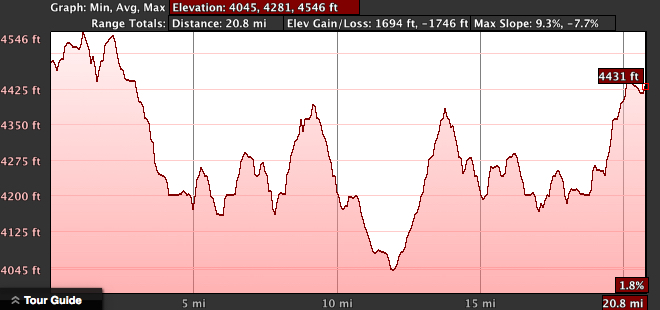



I have a Bafang 8 fun kit(350w motor,37v Samsung Lith-ion battery) fitted to my GT(City Cycles, Cape Town). My experience is the same as mentioned in your article. All pro’s & Con’s included. What is the difference between the Bafang 8 fun vs Dillinger Bafang?
Hi Chester, Dillenger is supplying the Bafang mid drive as a complete kit that includes their (Dillenger) battery and charger. 8FUN is the shortened name of Bafang but I believe they are phasing that out and will be just going with Bafang as the brand name.
https://gearsensor.com/
This might solve the problem with this kit and the Energie.
Let me know when they come out with one that has a separate controller and I will happy to have one. I don’t want a motor with the controller built in. They don’t last in my experience due to the heat off the motors.
check this page out a number of different kits and set ups you can use https://www.pedalease.co.uk/index.php?rt=product/product&path=67_71&product_id=113&session_id=fcc387519b34e381c2139870c2d01423
I have a 350W 36V 8Fun which I have fitted to my Sprint26 ICE trike. I think the mid-drive concept very well suited to the trike configuration though the Dillenger ‘drink-bottle’ 15.4 amp battery is difficult to place due to size and shape – I think I would sooner have a flatter shape with less tank capacity and maybe carry two. I have had one ‘sudden death’ battery failure so a standby would have been good. In the test blurb there was no mention of the assist levels used; this would influence the power consumption. From my experience (now over 6000 km ) the unit is very economical, quiet and smooth. I use the brake cut-off if I need to disconnect the drive quickly eg gear changes – I have Rohloff hub gears. When returning from a ride the last 1km is up a reasonably steep grade – 1:8 for which I select level 5 of 6 in 2nd gear @ 7kph – very easy pedalling. I’m not sure if the torque sensor would help with my set-up but a more suitable battery shape would be good. I am currently getting between 60 and 70kms per charge but actually I never run till the battery is totally used so those distances are pretty conservative. The average level of assist I use is roughly 3 – 4 of 6. The reason I fitted the e-drive is because 3 yrs ago I developed CFS (ME) and as a result have much less energy to contribute, hence the ‘outside’ help.
It is nice to read about some one who is using a 8FUN style mid drive,I have never had an electric trike but I hooked up a mid drive similar to this but used a 49cc gas engine hooked into the Bottom Bracket much like the way the 8Fun is done I will soon be trying to hook up a similar hook up with a 24v x 250 watt motor to the BB on my current trike……It is very nice to hear from some one using one of these type systems……my designs don’t have all the fancy wiring and or cut-offs
my motor is either on or off I run a sprocket in the chain between the wheel and the BB,when I want assistance I simply turn on the motor, and I instantly have full power coming from my 24v x 250 watt motor into the chain in whatever gear I happen to be in , no pedelec, just 2500 rpms,If it is too fast I can either down shift or just use the motor in small bursts or raw power,I can go really fast,I have no stats,but I never run out of power . If the battery’s [2 x 12v motorcycle batteries ] gets too low,I either switch batteries or start the propane powered generator……….Thank You for your posting I learned a lot from it!!
Is there any drag when the motor is set to the 0 setting, like there would be if it were a hub motor?
Hi Christian, yes there is some drag when the assist is turned off.
I don’t like how your reviews are broken up into two or more parts. That’s not usual.
If I read a car review, I get the whole thing. Same with computer reviews, coffee makers, etc.
And no matter what part of the review I’m reading (I’m never sure) there are aways talk of going to the other half of the review, somewhere.
Just do it normal, like everybody else. I’d find that easier to follow.
I don’t understand why EcoSpeed is not mentioned. EcoSpeed makes a super high quality mid drive system, with amazing torque because it is up to 1300 watts. I have had 2 EcoSpeeds for 6 years and have upgraded to their latest technology. They are a great company to deal with, stand behind their products, and for hill climbing EcoSpeed is amazing. I also have Bionx, their first verstion 350 Watt system, and it is nothing compared to EcoSpeed. I am interested in the new 500 D Bionx but since my main requirement is serious hill climbing, EcoSpeed will always be my go to system.
Hi Andrew,
Thanks for your thoughts on the EcoSpeed; it is good to get your feedback because it sounds like you have put the system to good use. This particular article is a review focused on the Dillenger Bafang kit but I recently posted an electric bike mid drive system guide which includes the EcoSpeed system.
Pete
Hi
I fitted two 8fun mid drives to our mountain bikes for use on our holidays around France – amazing range and power to cope with all terrain – I did fit the larger gear cassette to ensure all hills would be climbed with ease and it also takes the strain off the chain gear etc.
Worth every penny considering all the panniers we carry around.
Hi,
Lectric Cycles in the US includes a gear sensor with their Bafang/e-Rad kits.Watching the review from EBR on YT shows it works quite well.There is a bit of time delay using the gear sensor but it beats the heck out of mashed gears and wear on the bikes parts.
Now for the new 1000 watt Bafang/e-Rad!!
Joey.
There are other mid-drive systems besides Bosch or Bafang. There are GNG mid-drive system and From Taiwan Cyclone mid drive system not proprietary like the Bosch.. Bafang system is only limited to 48v while other offer higher voltage in their system.
I have 737 miles on a Bafang 750W center drive system with an aftermarket Lekkie Bling Ring sprocket. (Without replacing the original steel sprocket, off-set Will be an issue.) Battery: 50V (9P) Triangle Pack, High Energy-29E, 50V 24.8Ah. (18.8 lbs.) The Bike is a Panamericana, fully suspended, steel tour bike with 26” wheels, manufactured in Germany. Power is transmitted through a Rohloff 14-speed, speed hub and sporting hydraulic disc brakes. I have climbed 30,717 feet, 50 hours moving time in 33 total rides. Longest ride: 55.9 miles in 3.28 hrs. Elev chg + 1746 / – 1726 ft. (Note: I charge the pack to 80% and have never depleted it trying to extend the life of the battery so additional performance can be achieved.) The bike has been setup in a training/everyday configuration. Two full front panniers 20 lbs. each, an over full bar bag 6 to 10 lbs., two mirrors, umbrella, K-bar, 5 lbs. of Bluetooth speaker, GPS, 6’ cable lock, Litelok, dynamo and high density light, rear side-stand, leather seat bag and leather mud-flaps on full fenders, and water bottles. In this configuration she weighs 120 lbs. Rider weight is 300 lbs. The battery has been charged 15 times. Using the 8Fun motor has more of a learning curve than you would guess. Because I am using a Rohloff hub I disconnected the break lever cut-out switches. They were causing more problems than helping anyway. BUT, I stop peddling to shift, 1st to 14th and back without peddling. Quiet, smooth and 100% sure. Coming to a fast stop at a mistimed light would lead to a multi second power time-out and often a cpu lock-up (error 30H), leaving me floundering at the intersection. The power IS either on or off. The least peddle movement will activate the drive at whatever assist level it is set for. Applying torque to the peddles is only necessary if you wish to conserve battery or once at top speed to go faster. Unlike others I notice no drag from the motor when set at 0 PAS (assist)… but, my bike weighs 117 lbs. without my ass on it. Distance is of utmost importance to me not speed. I am truly hoping to reach distances of 100 miles as training progresses. I have mine set for levels 0-9 in pedal assist. I only use levels 0-3 all the time, most of the time, a lot of the time. I have found that using anything above PAS 3 is a luxury only. To feel the wind in your face. Speed is very very addictive. And distance is most important to me. I peddle with PAS when going uphill at all times. This sounds obvious but remember there is a throttle to bypass the peddle assist. On level ground you can pause peddling, feather in the throttle and actually increase speed a mile or 2 an hour, hold it there until you reach an incline that would bog the motor down or until the battery runs dry. To combat a head wind, you can go to a higher PAS level, peddle harder, use the throttle, or… down shift and KBO like you don’t have a motor. How Far OR How Fast. I use the throttle as little as possible knowing that it all decreases my maximum possible distance. But I can’t describe the feeling of timing an intersection correctly, going to level 9 on PAS, shifting to 14th gear and sailing through the light with little to no effort.